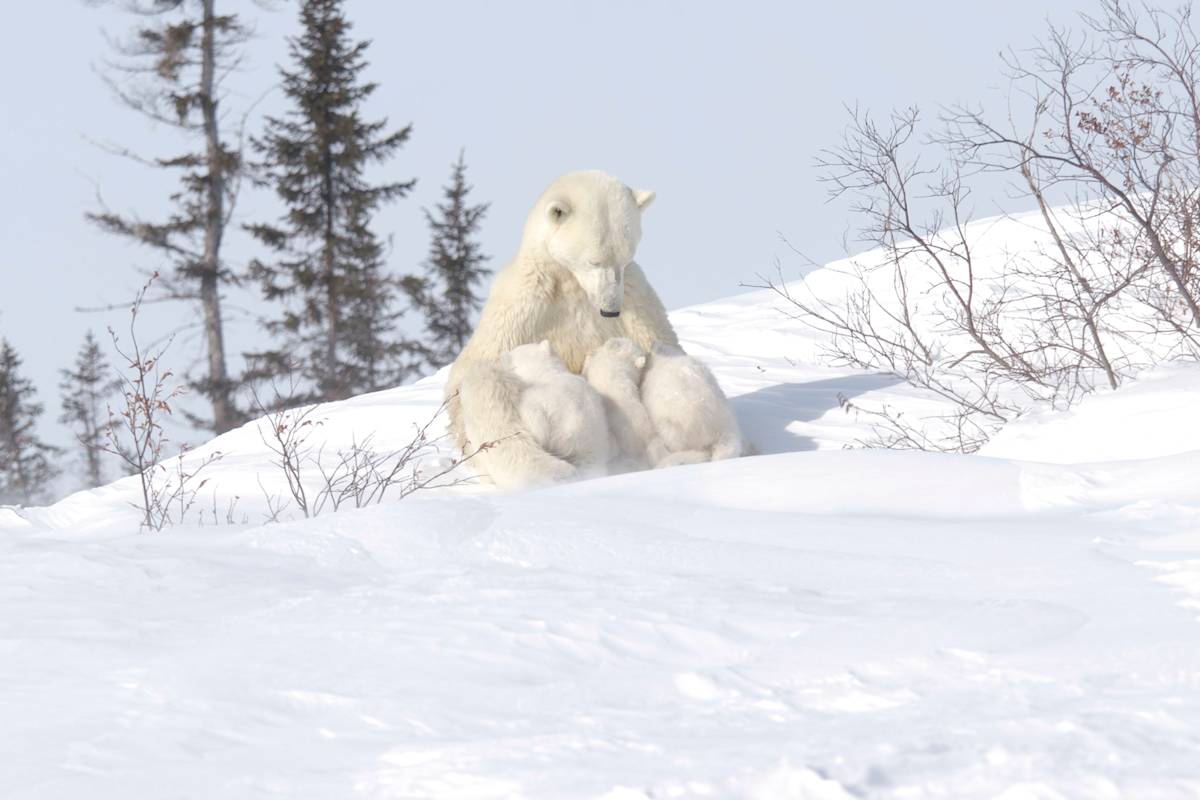New Study Reveals Potential Impact of Sea Ice Loss on Polar Bear Lactation
As polar bears spend more time fasting on land due to disappearing sea ice, moms stop producing milk or produce less energetically-rich milk for their cubs

Photo: Handcraft Creative
MINS
05 Oct 2023
As polar bears spend more time fasting on land due to disappearing sea ice, moms stop producing milk or produce less energetically-rich milk for their cubs
Bozeman, Montana – October 5, 2023 – Research conducted by scientists from the University of Toronto, the U.S. Geological Survey, and Polar Bears International has uncovered a link between climate change and the lactation of polar bears. Published today in Marine Ecology Progress Series, Lactation performance in polar bears is associated with fasting time and energetic state, the study finds that when melting sea ice forces polar bears to spend more time fasting on land, polar bear mothers produce lower-energy milk or stop producing milk for their cubs altogether.
“We’ve identified a link between time spent fasting on land and the mom’s ability to provide energy for their cubs, which may ultimately affect population dynamics,” says Dr. Louise Archer, report author and Polar Bears International Postdoctoral Fellow at the University of Toronto Scarborough, adding, “Polar bear lactation is crucial to the survival of cubs but is still not well-understood. These results may also affect our understanding of other long-lived species that must nurse offspring without access to food.”
By filling a gap in our understanding of polar bear lactation, this study advances the quantifiable link between climate change, sea ice, and polar bear survival.
Key takeaways:
As polar bears spend more time fasting on land, their body condition declines and they either stop producing milk for their cubs or produce milk with lower energy content.
The production of lower-energy milk negatively affects the growth rate of cubs, potentially impacting population health.
Milk production is influenced by the mom’s body condition and cubs’ age: Females with cubs-of-the-year (called “COY,” cubs born that winter) produced more energy-rich milk than females with yearlings (cubs from the previous year).
The data: This study analyzes data from polar bear milk collection samples captured in Western Hudson Bay between 1989 and 1994. Results showed that after approximately three months on land, the probability of a female with COY lactating was 53% and dropped as low as 35% for a female with yearlings. For females with one cub that continued to lactate, the energy content of their milk was 50% lower after three months on land, while milk energy dropped by >75% for females with two cubs. Females that reduced their lactation output saved energy, but their cubs grew more slowly, with some cubs not growing at all between recaptures.
Mother’s inability to successfully raise cubs is linked to population declines: The decline in lactation performance has likely contributed to increased cub mortality and a significant reduction in the size of the Western Hudson Bay population, which has decreased by about 50% since the early 1980s. On average, less than half of all cubs reach adulthood, with even lower survival rates in the most vulnerable populations.
Previous research shows that polar bear milk is generally extremely high in energy (up to ~33% fat), and cubs will typically stay with their mother for around 2.5 years, with females lactating for much of this time.
Female polar bears must continually make resource allocation decisions, from delayed implementation to milk production. In this study, when females spent longer fasting and burned through their own fat reserves, they were increasingly forced to prioritize their own energetic needs, with less energy available to allocate to their cubs. As the Arctic continues to warm and polar bears are forced to spend more time on land with fewer hunting opportunities, the health and survival of both mothers and cubs will continue to be compromised.
About Polar Bears International
Polar Bears International’s mission is to conserve polar bears and the sea ice they depend on. Through media, science, and advocacy, we work to inspire people to care about the Arctic, the threats to its future, and the connection between this remote region and our global climate. Polar Bears International is the only nonprofit organization dedicated solely to wild polar bears and Arctic sea ice, and its staff includes scientists who study wild polar bears. The organization is a recognized leader in polar bear conservation. For more information, visit www.polarbearsinternational.org.
Media Contacts
Annie Edwards, for Polar Bears International
annie@fabricmedia.net
T: +44 07307 139782
Melissa Hourigan, for Polar Bears International
melissa@fabricmedia.net
T: +1 720-608-1919